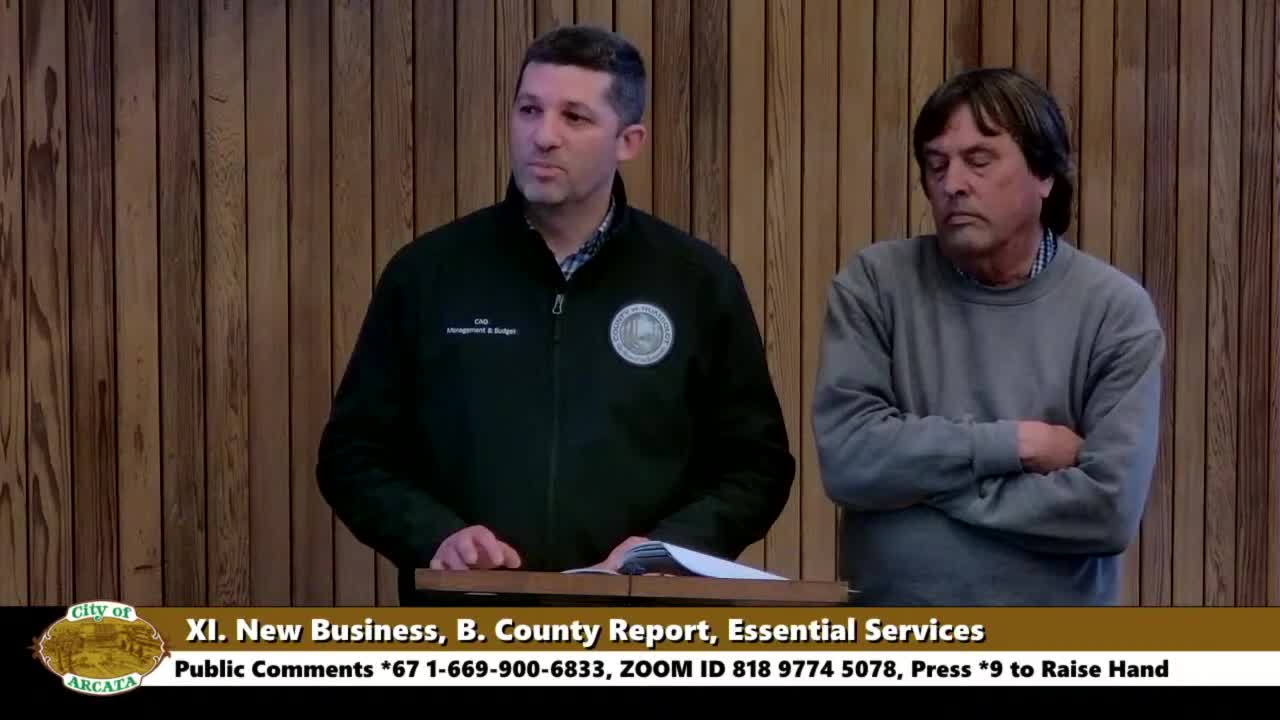County faces road crisis amid rising disaster costs
June 13, 2024 | Arcata City, Humboldt County, California

This article was created by AI summarizing key points discussed. AI makes mistakes, so for full details and context, please refer to the video of the full meeting. Please report any errors so we can fix them. Report an error »

In a recent government meeting, officials highlighted the urgent need to enhance the resilience of local road infrastructure in response to increasing natural disasters. The discussion centered on the financial challenges faced by the county's road department, which has been significantly impacted by a series of disasters over the past few years.
Tom, a key speaker at the meeting, detailed the financial strain on the road system, noting that the county has experienced five disasters from 2022 to 2024 alone, resulting in approximately $70 million in damages. He emphasized that while federal and state reimbursements are available, they often do not cover the full costs of repairs or the necessary upgrades to prevent future damage. FEMA, for instance, only reimburses for restoring roads to their previous state, which does not account for the need to \"harden\" them against future disasters.
The current state of the county's roads is concerning, with the Pavement Condition Index (PCI) dropping from 60 to 49 since 2017, and projections indicating it could fall to 23 in the next decade. This decline could lead to many rural roads reverting to gravel, severely impacting disaster response capabilities and overall accessibility.
Officials pointed out that six neighboring counties, which maintain a PCI above 70, have implemented local revenue measures dedicated to road maintenance. This funding model has allowed them to keep their infrastructure in better condition, contrasting sharply with the county's current predicament, where maintenance budgets are being cut due to the financial burden of disaster recovery.
The meeting concluded with a call to action for the council to consider new funding strategies to support road hardening initiatives. These initiatives would involve constructing better retaining walls, improving slope protection, and rerouting roads to enhance their resilience against natural disasters. The officials stressed that investing in road infrastructure now could prevent more costly repairs in the future and ensure safer, more reliable access for residents during emergencies.
Tom, a key speaker at the meeting, detailed the financial strain on the road system, noting that the county has experienced five disasters from 2022 to 2024 alone, resulting in approximately $70 million in damages. He emphasized that while federal and state reimbursements are available, they often do not cover the full costs of repairs or the necessary upgrades to prevent future damage. FEMA, for instance, only reimburses for restoring roads to their previous state, which does not account for the need to \"harden\" them against future disasters.
The current state of the county's roads is concerning, with the Pavement Condition Index (PCI) dropping from 60 to 49 since 2017, and projections indicating it could fall to 23 in the next decade. This decline could lead to many rural roads reverting to gravel, severely impacting disaster response capabilities and overall accessibility.
Officials pointed out that six neighboring counties, which maintain a PCI above 70, have implemented local revenue measures dedicated to road maintenance. This funding model has allowed them to keep their infrastructure in better condition, contrasting sharply with the county's current predicament, where maintenance budgets are being cut due to the financial burden of disaster recovery.
The meeting concluded with a call to action for the council to consider new funding strategies to support road hardening initiatives. These initiatives would involve constructing better retaining walls, improving slope protection, and rerouting roads to enhance their resilience against natural disasters. The officials stressed that investing in road infrastructure now could prevent more costly repairs in the future and ensure safer, more reliable access for residents during emergencies.
View full meeting
This article is based on a recent meeting—watch the full video and explore the complete transcript for deeper insights into the discussion.
View full meeting
